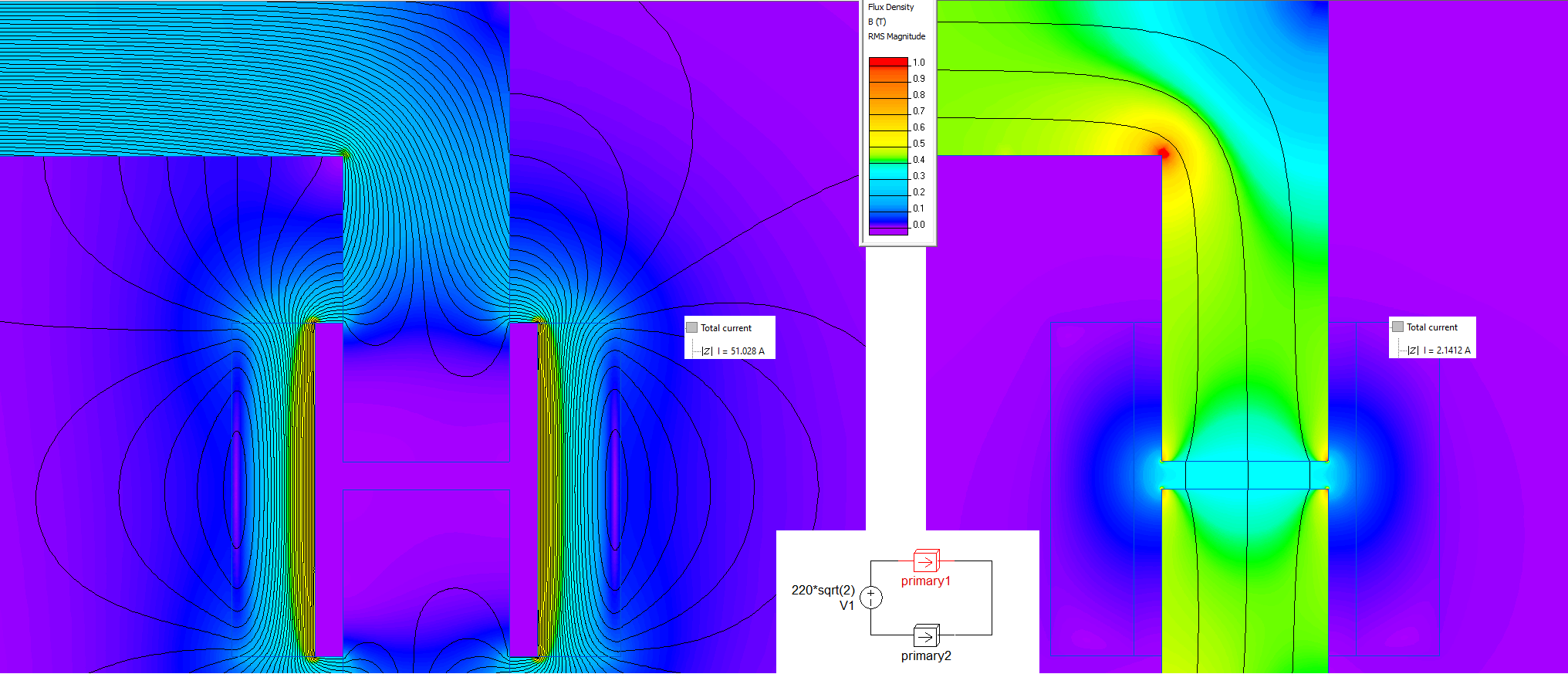Superconducting fault current limiter
QuickField simulation example
This simulation example is prepared by Professor James R. Claycomb as a part of the webinar Fault Current Limiter Simulations using QuickField.
An inductive superconducting current limiter utilizes the fact that a superconductor becomes a normal conductor at some critical value of magnetic flux density. Below the critical value the superconductor effectively screens the core thus reduces the winding inductance. When the fault occurs, the current increases many times, and its magnetic field causes the superconductor to come to a normal state.
Problem Type
Plane-parallel problem of AC magnetics.
Geometry
Axial length is 30 mm
Given
Mu-metal permeability is 10000.
Winding number of turns is 900, conductor cross-section area is 1 mm², copper conductivity σ = 56 MS/m.
Voltage source V = 220 V (r.m.s.), frequency 50 Hz.
Superconductor permeability in superconducting state is 10-7, in normal state 1.
Task
Calculate the fault current.
Solution
The model includes left and right sides of the coil both that have the length of 30 mm each, but does not include front and back sides of the coil, that have the length of 55 mm each. To take into account the resistance of missing parts, electrical conductivity of the coil is attenuated: σ * (30 + 30) / (30 + 30 + 55 + 55) = 19.76 MS/m.
Results
If a superconductor would remain in superconducting state, the fault current will be 51 A. But strong magnetic field causes the superconductor to go to a normal state. Then the fault current is limited to a value of 2.1 A.
Left picture shows the case, when the superconductor is in the superconducting state and fully screens off the core. Right picture shows a case when the superconductor is in a normal state.

- Video: Superconducting fault current limiter. Watch on Youtube
- Download simulation files (files may be viewed using any QuickField Edition).